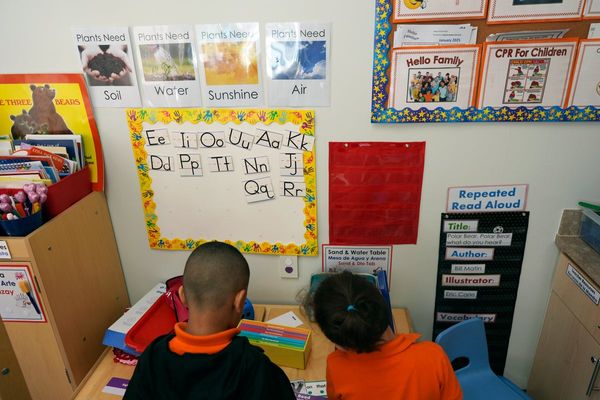
President Trump has been drumming, "Drill, Baby, Drill!" He will most likely lower oil and refined product prices in time. But how long will that take? Mother nature, consumer spending, and habits dominate the upcoming driving season, and oil prices are looking to increase.
How can more supply increase prices?
We all know that a higher supply will lower prices, but there is significant demand for crude oil before that supply increase occurs. In a recent article written for Barchart, "It's All About the Crude Oil Insiders Knowing Something We Don't," I describe how the refiners of crude oil are highly bullish and purchasing more significant amounts of crude oil than at the same time last year.
Our 45th and 47th President, Donald Trump, has a plan
Many in the oil industry are happy to see Trump win. The previous administration had imposed numerous regulations on the energy sector. While the industry enjoyed record-setting oil and gas production during this period, the regulations created significant financial and land use restrictions.
Trump plans to reduce or eliminate many of these regulations, allowing for fewer financial restrictions on drilling and exploration. Deregulation is not new to President Trump. During his first term, he revoked several rules from the previous administration.
The President would also like sub $2.00 per gallon of gasoline. During his first term, gas prices dropped to an average of $1.84 in April 2020. The economy was entering the COVID-19 pandemic, and chaos was in all financial markets. Crude oil was oversupplied during this period, and prices went negative briefly. This resulted in the low gasoline price, which in today's terms would most likely require another catastrophic event to see gas below $2.00 for any sustained period.
While lower oil prices are possible during the Trump administration, the issue for near-term supply is how long it will take his team to get these deregulation efforts through the appropriate government channels. We all know they don't move too quickly.
The demand for oil in the near term
In December, heating and gasoline refiners purchase enough oil to refine the product and sell it by the end of the month. Refiners with excess inventory at year-end will be taxed by the government even if the oil is still in their pipelines.
As the new year begins, gasoline refiners will continue buying oil and preparing for the upcoming summer driving season that starts at the end of May.
The refiners of heating oil will also have to evaluate how much oil will be needed to carry through the remaining cold winter months. The 2025 winter season is starting colder than several previous ones. Several regions of the country, even as far south as Florida, have experienced the results of the cold vortex weather engulfing much of our country.
Reuters reported, "JP Morgan analysts estimate that for the United States, Europe, and Japan, for every degree Fahrenheit, the temperature drops below its 10-year average, there is an increase of 113,000 barrels per day (bpd) in demand for heating oil and propane "as teeth-chattering temperatures prompt consumers to crank up their heat."
For these reasons, "both" gasoline and heating oil refiners will need to purchase more crude oil to meet consumers' needs. With the burden of cold weather, the demand for gasoline for the upcoming driving season oil prices will most likely continue higher until May, when the seasonal buying of crude oil usually terminates.
Additional demand for gasoline in 2025
Another Reuters story describes the most significant automobile sales in 2024 since 2019: "Sales of new vehicles finished at 15.9 million last year, according to Wards Intelligence, up 2.2% from the prior year and the highest since 2019. Automakers are projecting strong sales will continue into 2025, although President-elect Donald Trump's proposed automotive policies, such as removing tax credits for EVs, present a wild card."
With auto sales increasing to five-year highs, ask yourself: When the summer driving season begins in May, will these new vehicles be sitting in their driveways or out on the highways? Add this additional influx of demand to the traditional driving season, and we can see why the oil prices leading up to the 2025 driving season can and should rally as they usually do.
Commitment of Traders (COT) report

Source: CME Group Exchange
The graph illustrates how the refiners of heating oil and gasoline have been buying (blue lines) oil. And for this upcoming driving season, they have already amassed more long positions than they did for last year's driving season.
Seasonal pattern

Source: Moore Research Center, Inc. (MRCI)
MRCI research has refined a seasonal window using the past 15 years of data. During this window, speculators may wish to trade in and out of positions with a bullish bias or choose to stay in the trade for the duration of the seasonal window.
Historically, crude oil prices have closed higher on February 19 than on January 25 for 13 of the past 15 years, an 87% occurrence rate.
The table below also reveals that for four of the past 15 years, the market has never had a closing daily drawdown while in the trade.

Source: MRCI
As a crucial reminder, while seasonal patterns can provide valuable insights, they should not be the basis for trading decisions. Traders must consider other technical and fundamental indicators, risk management strategies, and market conditions to make well-informed and balanced trading choices.
Markets to participate in this opportunity
Futures market traders could trade the standard-size (CL) crude oil contract, (QM) the mini-crude oil contract, or the micro-contract (CY). Equity traders may be interested in trading the exchange-traded fund (USO). Bullish oil prices, sometimes seen as an expanding economy, could positively impact the stock market and result in a bullish price move. Trading the mini S&P 500 (ES) or the micro-contract (ET) to participate.
In closing….
In conclusion, while oil prices may eventually stabilize or decline as supply catches up with demand and deregulation efforts take effect, the current trajectory points toward higher prices in the near term. Seasonal demand dynamics, colder-than-average winter weather, and an anticipated surge in summer driving are key factors driving this upward pressure. Additionally, the recent boom in automobile sales adds another layer of demand as new vehicles are poised to hit the roads during the peak driving season. These factors, combined with the bullish activity among crude oil refiners and historical seasonal patterns, suggest that the market is preparing for sustained price increases as we advance into May.
That said, it's essential to remember that markets are fluid, and supply-side dynamics may shift over time as deregulation initiatives materialize. President Trump's commitment to reducing regulatory barriers could eventually lower the cost of production, increase supply, and ease prices. However, these changes will take time to implement and filter through the market. For now, strong seasonal demand amid heightened heating oil needs and optimistic economic indicators set the stage for higher oil prices in the coming months. Investors and consumers should prepare for this near-term trend while remaining mindful of potential shifts in the longer-term outlook.







